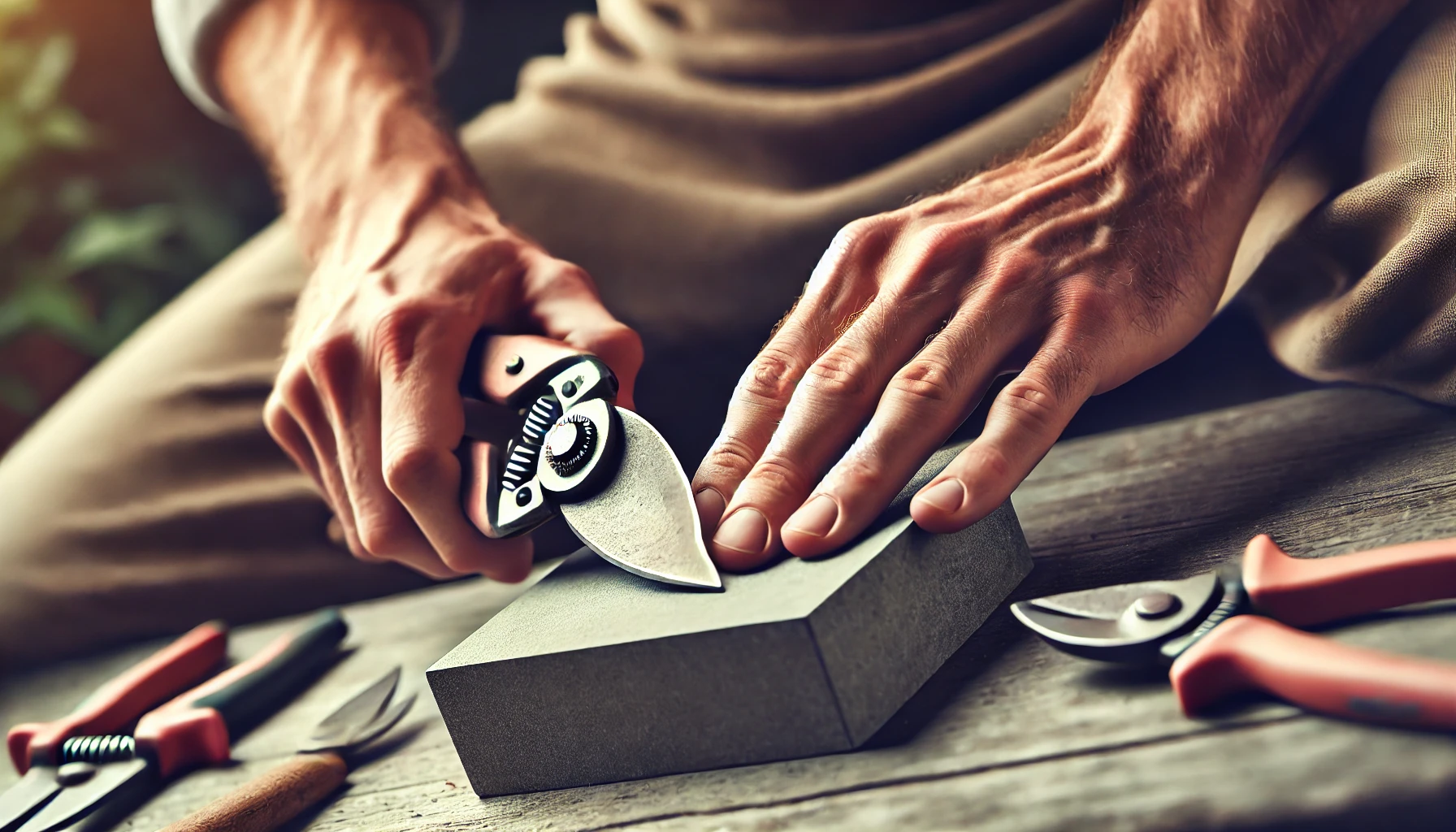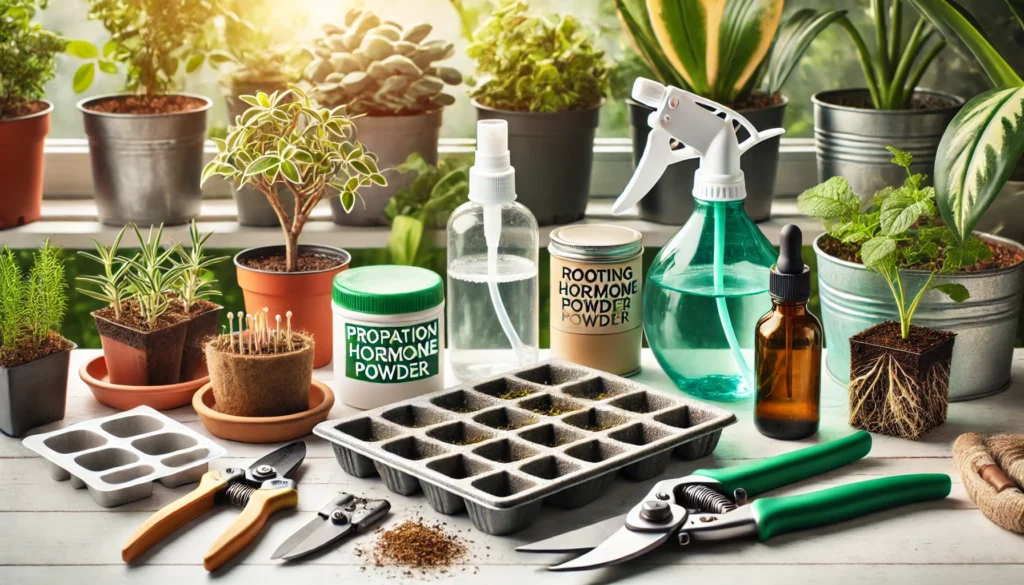
Essential Tools for Plant Propagation: Must-Have Equipment for Successful Gardening
Whether you’re a seasoned gardener or just getting started, having the right equipment can make all the difference in the success of your plant propagation efforts. From rooting cuttings to growing new plants from seeds, having the essential tools for plant propagation ensures that you get the best results with minimal effort. In this article, we’ll explore the must-have tools that every gardener needs to propagate plants successfully, helping you grow a thriving garden and avoid common mistakes. Let’s dive into the equipment that will set you up for success in your propagation journey!
Table of Contents
ToggleUnderstanding Plant Propagation
Plant propagation is the process of creating new plants from an existing one. This technique is essential for gardeners looking to grow their plant collections without purchasing new ones. It can be done through seeds, cuttings, division, or layering, with each method suited to different types of plants.

Why Propagate Plants?
Propagating plants helps maintain plant variety and ensures you can grow more of your favorite species. It also gives gardeners an opportunity to grow plants with desirable traits, like disease resistance or superior growth habits. Plus, it’s a cost-effective way to expand your garden.
Types of Propagation Methods
- Seed Propagation: Growing plants from seeds is the most natural method, but it requires patience. Seeds need the right environment to germinate and can take time to develop.
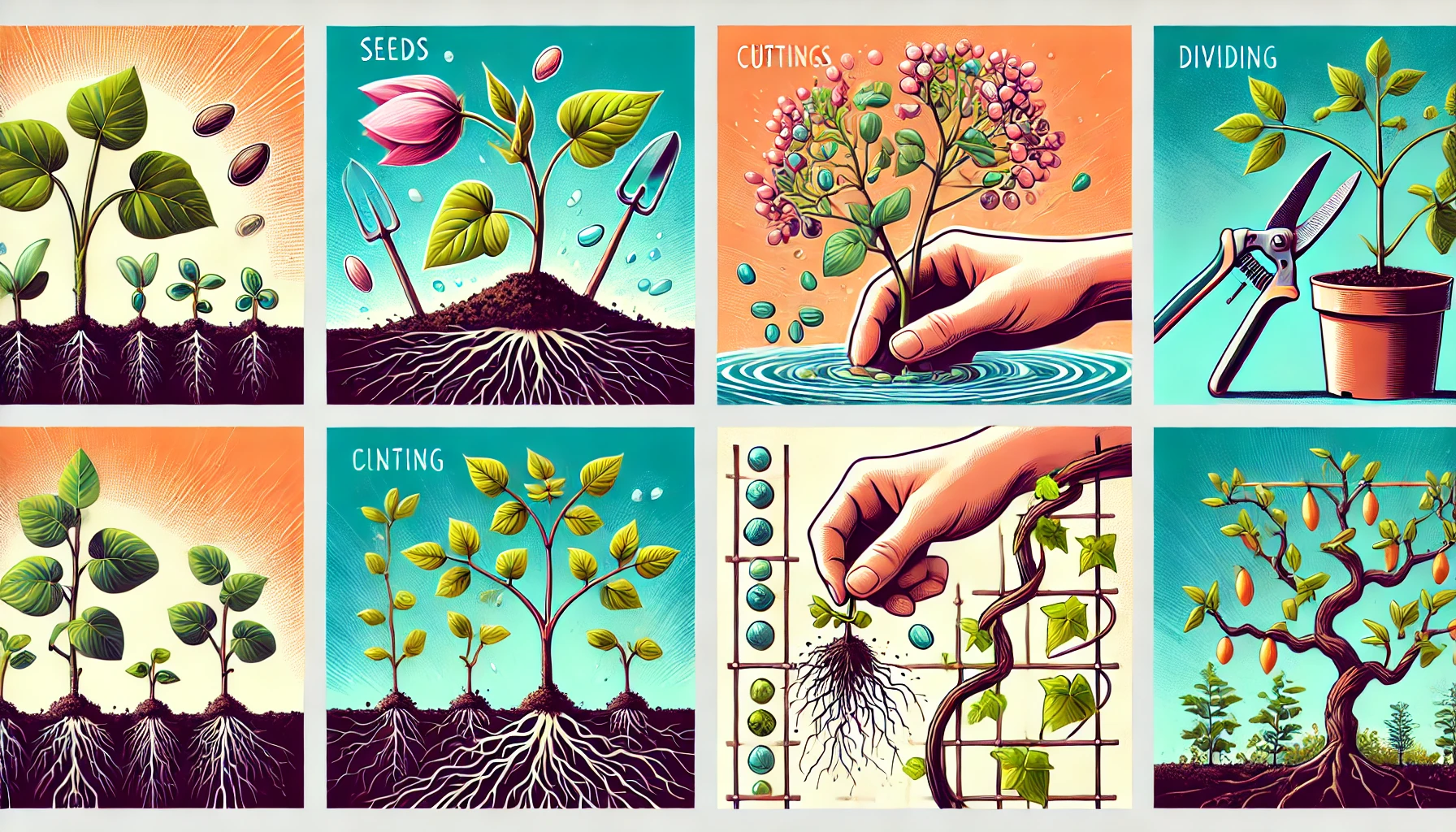
- Cuttings: This method involves taking a piece of the plant, such as a stem, leaf, or root, and encouraging it to grow roots in water or soil. It’s faster than seed propagation and often yields more reliable results.
- Division: Some plants, particularly perennials, can be divided into smaller sections, each of which can grow into a new plant. This method works well for plants with a spreading root system.
- Layering: This involves bending a stem or branch down to the soil where it can take root before being separated from the parent plant. It’s particularly useful for shrubs and vines.
Choosing the Right Propagation Method
The best propagation method depends on the plant species and your gardening goals. For example, cuttings are ideal for quick results with herbs or shrubs, while seed propagation is great for creating large quantities of plants at once. Understanding each method’s benefits and limitations ensures success in your propagation efforts.
By mastering these techniques, you can propagate plants that thrive in your garden, increasing your plant diversity and satisfaction.
Must-Have Tools for Plant Propagation
Successful plant propagation starts with having the right tools at your disposal. Whether you’re propagating from seeds, cuttings, or division, using the appropriate tools ensures a higher success rate. Here are the essential tools you’ll need for a smooth propagation process:
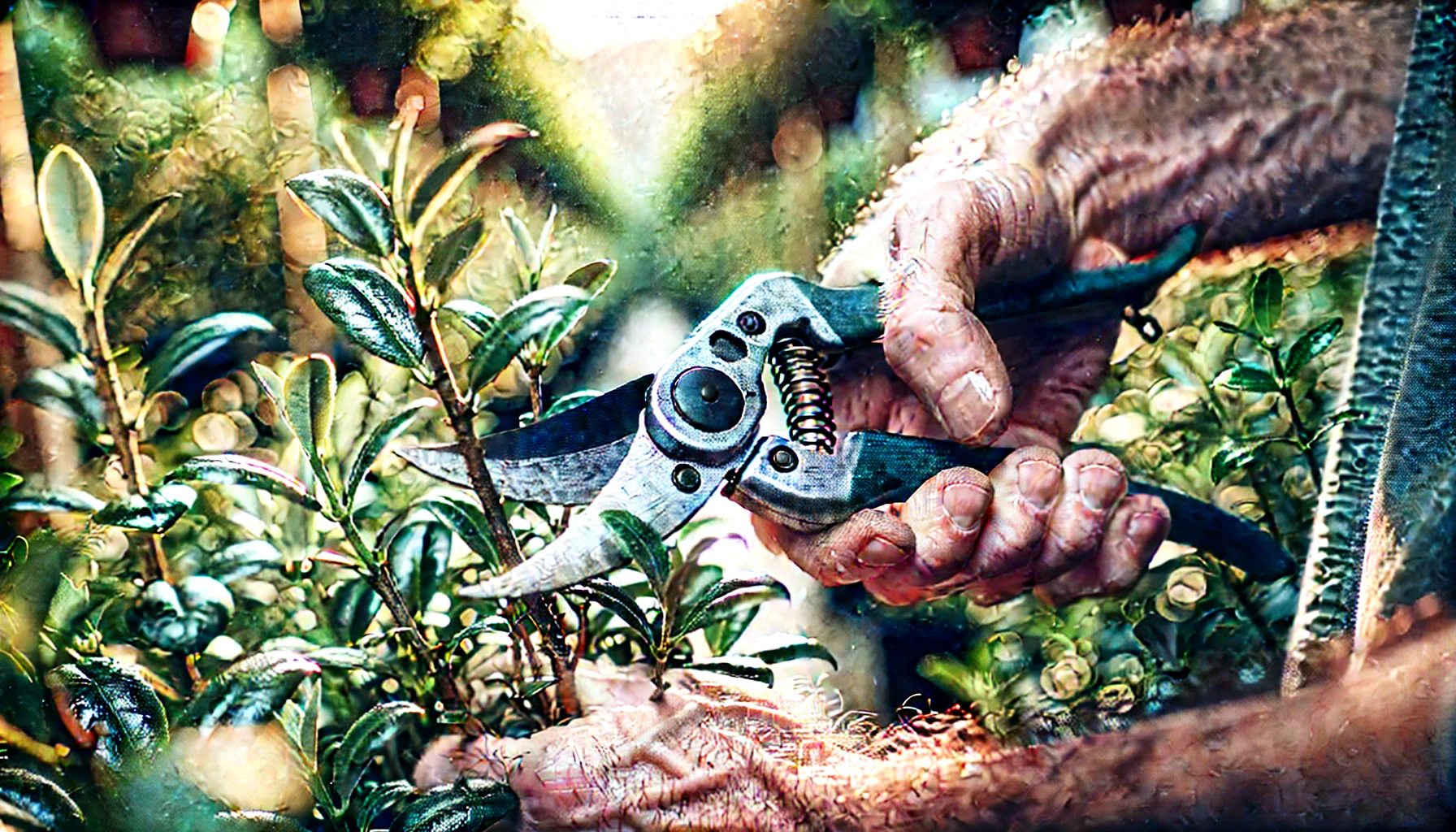
Sharp Pruning Shears
A clean, sharp pair of pruning shears is crucial for cutting healthy plant stems or branches. Dull blades can damage the plant tissue, making it more prone to disease. Invest in high-quality shears for precise cuts that promote faster healing and better rooting.
Propagation Tray or Container
A propagation tray helps to keep your cuttings or seedlings organized and supports moisture retention. If you’re starting from seeds, choose a tray with drainage holes to avoid waterlogging. You can also use a shallow container or plastic containers for cuttings and seedlings.
Rooting Hormone
Rooting hormone speeds up the rooting process by stimulating root growth. It is especially helpful for woody cuttings like those from shrubs or trees. Choose between powder, gel, or liquid hormone, depending on your preferences and the plant type.
Humidity Dome or Plastic Wrap
Maintaining humidity is key to successful propagation. A humidity dome or plastic wrap over your tray or container helps retain moisture and creates a greenhouse effect that encourages root development. It’s important to allow for occasional air circulation to prevent mold.
Well-Draining Potting Mix
A well-draining, lightweight potting mix is ideal for starting cuttings and seeds. It provides the necessary aeration and moisture retention to support root growth without suffocating delicate roots. Avoid using heavy garden soil, which can compact and retain too much moisture.
Spray Bottle
For delicate seedlings and cuttings, a spray bottle is useful for gently misting them without disturbing the plants. Regular misting helps maintain humidity without the risk of overwatering, which can lead to rot.
Grow Lights (Optional)
If you’re propagating in low-light conditions, grow lights are beneficial to ensure your plants get enough light to encourage growth. Opt for LED grow lights or fluorescent lights designed for plant care, especially if you’re starting plants indoors.
By having these essential tools on hand, you’ll set yourself up for success in plant propagation, giving your plants the best chance to thrive.
Supporting Tools for Propagation Success
Successful propagation relies on the right tools to ensure your plants grow healthy and strong. Using the right tools can make a significant difference in the success rate of your plant propagation efforts. Here’s a list of essential tools that will support your journey:
Clean Sharp Scissors or Pruners
Always use clean, sharp scissors or pruners to cut healthy plant cuttings. This minimizes the risk of infection and ensures precise cuts for better root development.
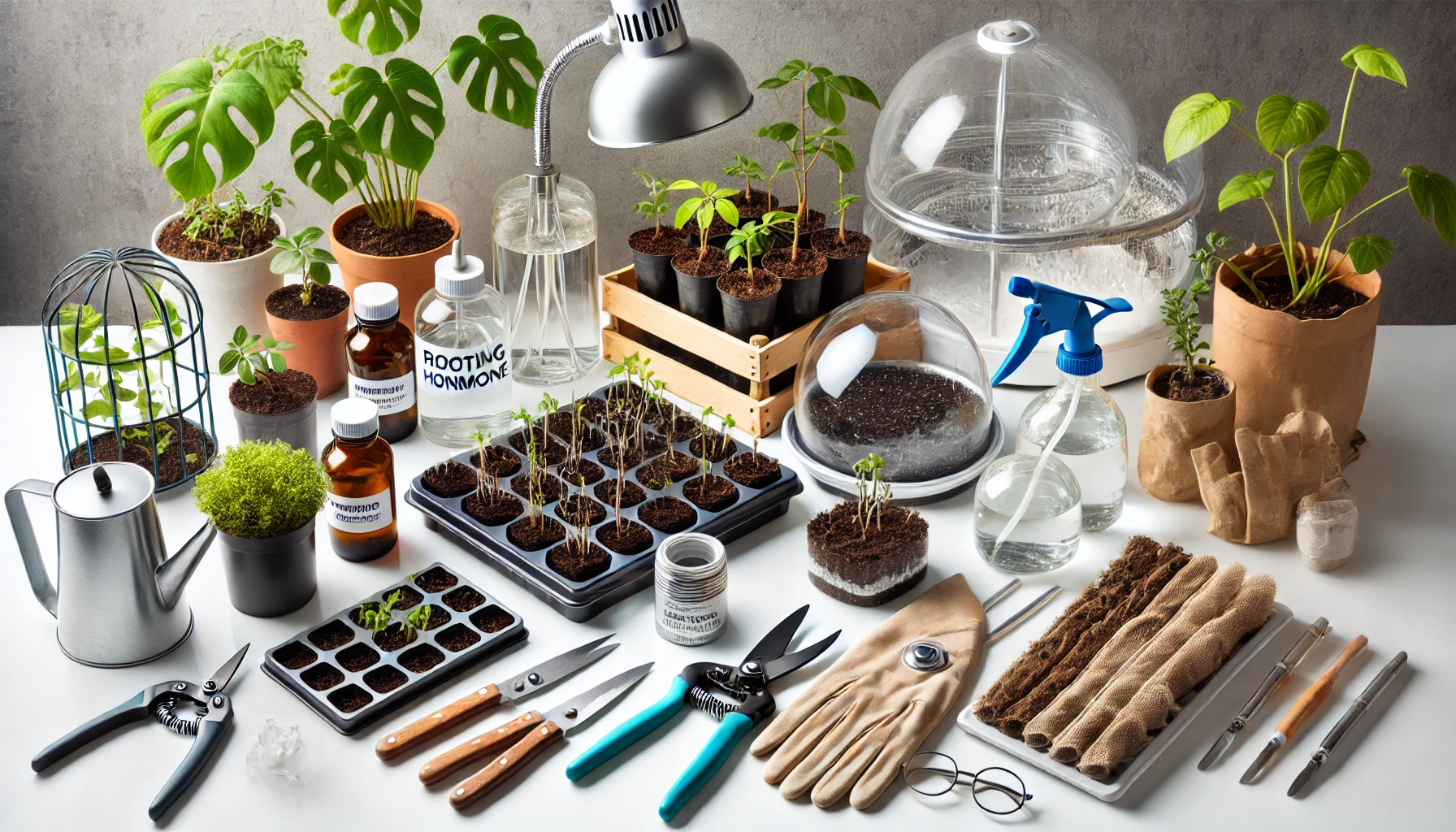
Rooting Hormone
Rooting hormone can speed up the rooting process by encouraging stronger, faster root growth. Simply dip the cut end of your cutting into the hormone before planting. It’s a great way to improve the success rate, especially with woody plants.
Propagation Tray or Pots
A propagation tray with clear plastic lids helps maintain humidity around the cuttings, mimicking a greenhouse effect. Alternatively, small pots with drainage holes work well, allowing proper airflow and preventing waterlogging.
Sterilized Soil or Growing Medium
Use a well-draining soil mix, such as a combination of perlite and peat moss, to ensure the cuttings have a healthy environment to grow roots. Sterilizing the soil before use is also crucial to avoid diseases.
Humidity Dome or Plastic Bags
Maintaining high humidity is key for cuttings. A humidity dome or plastic bags can help trap moisture and prevent dehydration. Ensure there’s enough ventilation to avoid mold growth.
Grow Lights
For indoor propagation, grow lights can simulate natural sunlight, especially during the winter months. Opt for full-spectrum LED lights to provide the necessary wavelengths for plant growth.
Watering Can with a Fine Mist Sprayer
Keeping cuttings hydrated is essential, but overwatering can be harmful. A fine mist sprayer delivers just the right amount of water without soaking the soil, preventing rot.
By having these tools at your disposal, you can create an optimal environment for your plant cuttings to root and thrive. A well-equipped propagation setup not only boosts success rates but also simplifies the process for a smoother gardening experience.
Environmental Control Tools
Maintaining the right environment is essential for plant health, and environmental control tools can make a huge difference in your success. These tools allow you to create optimal conditions for your plants, ensuring healthy growth and productivity. Here’s a quick look at some key tools and how they can help:
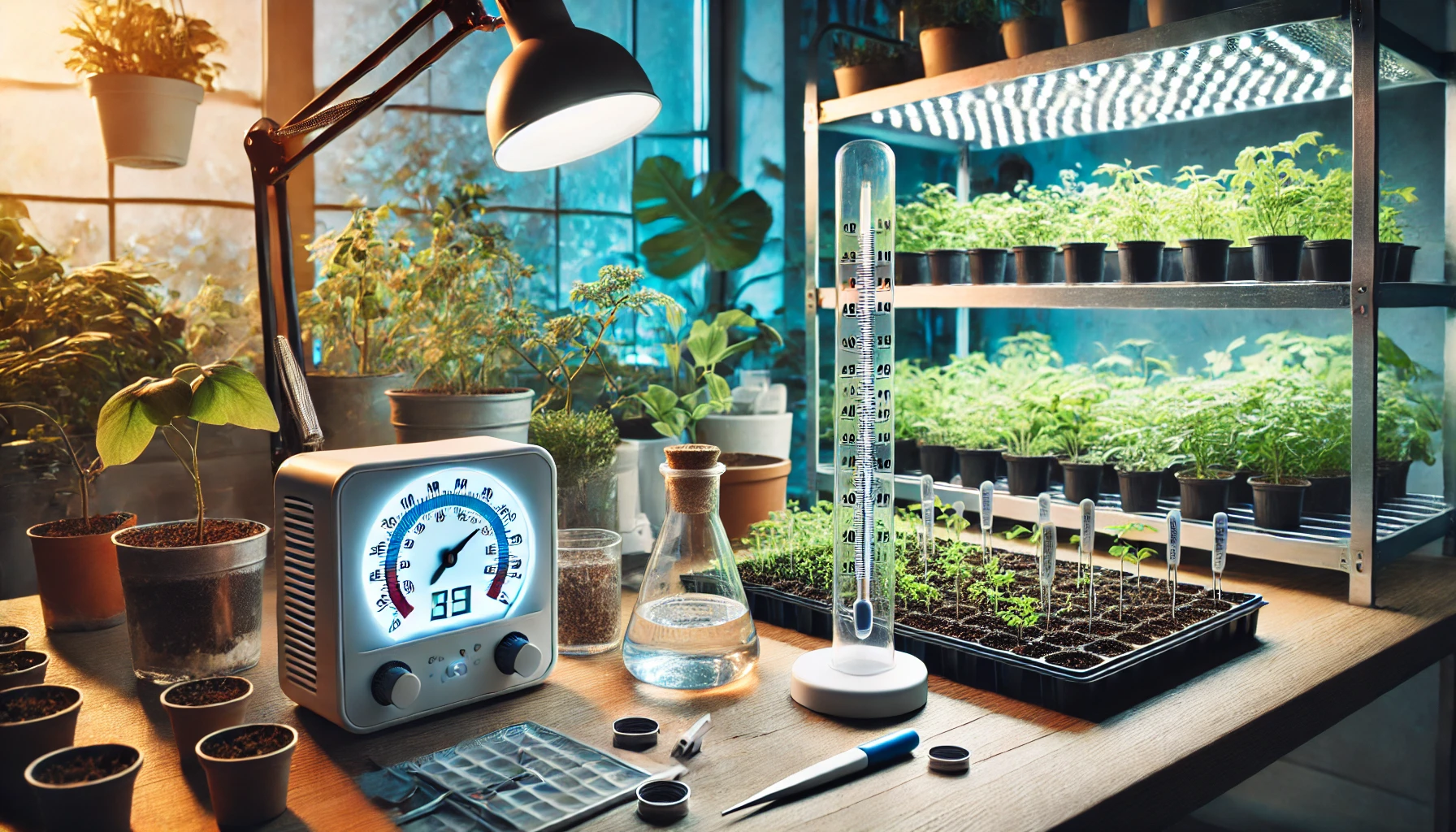
Thermometers and Hygrometers
Temperature and humidity play a significant role in plant health. Using thermometers helps you monitor the air temperature, while hygrometers track humidity levels. This is especially important for indoor plants or growing spaces with variable conditions. Keep the temperature within your plant’s ideal range to avoid stress and poor growth.
Grow Lights
For plants that need more light or for indoor gardening, grow lights are indispensable. These lights provide the right spectrum to support photosynthesis, even in areas with limited natural sunlight. LED grow lights are energy-efficient, produce less heat, and can be adjusted to suit various plant needs.
Air Circulators
Proper air circulation helps prevent the growth of mold and mildew while promoting healthy transpiration. Fans or small air circulators can ensure consistent airflow in greenhouses or indoor plant spaces. This also reduces the risk of pests by making the environment less favorable for them.
Timers for Irrigation Systems
A timer-controlled irrigation system ensures that your plants are watered consistently without over or under-watering. These systems can be automated, saving you time and preventing water-related issues like root rot. Timers also help maintain optimal soil moisture levels for healthier plants.
Soil Moisture Meters
These meters allow you to track the moisture level in your soil accurately. By using a soil moisture meter, you can avoid overwatering or underwatering, which can lead to plant stress. This tool ensures your plants receive just the right amount of water, promoting strong root systems.
Climate Control Systems
For serious gardeners, especially those in regions with extreme weather, climate control systems are invaluable. These systems control temperature, humidity, and airflow within a greenhouse or grow tent, ensuring a stable environment year-round. They can be set to automatic adjustments, making them convenient for both novice and experienced gardeners.
By incorporating these environmental control tools, you can effectively manage the growing conditions of your plants. This allows you to focus on nurturing their growth and enjoying a thriving garden, whether indoors or outdoors.
Extra Tools for Advanced Propagators
For experienced plant propagators, using specialized tools can increase success rates and efficiency. Here are some expert-recommended tools to take propagation to the next level:
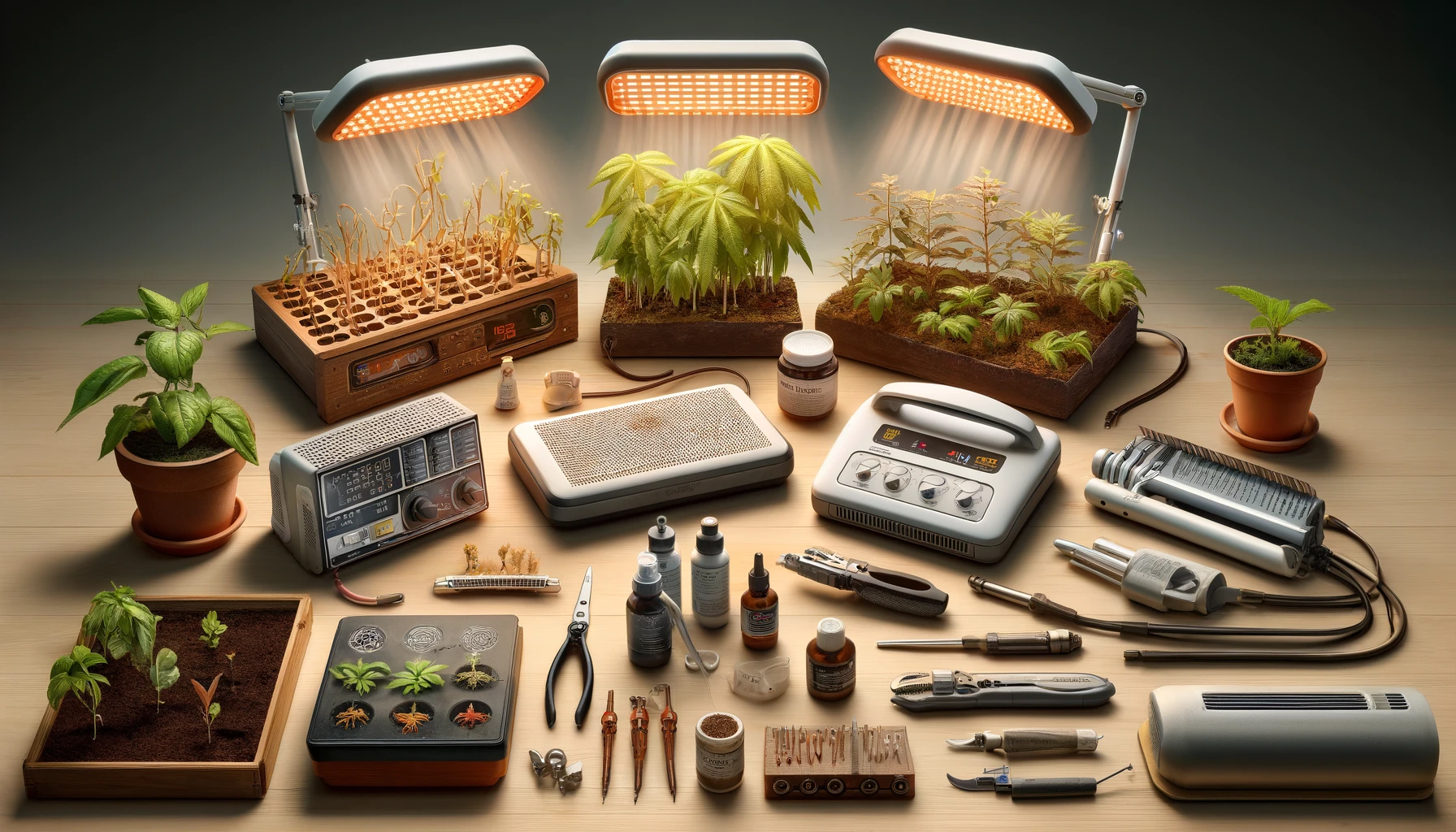
Heat Mats
Maintaining the right soil temperature is crucial for seed germination and root development. Heat mats provide consistent warmth, speeding up the process, especially in colder environments.
Rooting Hormones
While many plants root naturally, using rooting powders or gels enhances growth by stimulating faster root production. These are especially useful for hardwood cuttings and difficult-to-propagate species.
Misting Systems
Humidity is key for propagation success. Automated misting systems ensure a steady moisture supply, preventing cuttings from drying out while reducing manual watering.
Grow Lights
Proper light exposure promotes strong root and foliage growth. Full-spectrum LED grow lights provide the right intensity for seedlings and cuttings, especially during winter or in low-light conditions.
Aeroponic Propagators
For advanced growers, aeroponic propagation systems offer a soil-free method that accelerates root development using nutrient-rich mist. These systems minimize transplant shock and maximize root strength.
Scalpel or Grafting Knife
A clean and precise cut increases the success of grafting and propagation. A sharp scalpel or grafting knife helps make smooth cuts, reducing damage and infection risk.
Propagation Chambers
Mini-greenhouses or humidity domes create the perfect microclimate for delicate cuttings, maintaining optimal moisture and temperature for strong root establishment.
Using these tools, advanced propagators can improve efficiency, boost success rates, and achieve healthier plants with minimal effort.
Tool Maintenance and Care
Proper maintenance of your tools is essential for their longevity and efficiency. Well-maintained tools not only perform better but also ensure safety and reduce the risk of costly replacements. Here’s how to keep your tools in top shape:
Clean After Every Use
Dirt, rust, and debris can damage tools over time. After each use:
- Wipe down metal parts with a dry or slightly damp cloth.
- Use a brush to remove stubborn dirt or sap.
- For power tools, blow out dust from vents and moving parts.
Lubricate Moving Parts
Friction can wear down hinges, blades, and gears. Apply a few drops of machine oil or silicone lubricant on moving joints to keep them working smoothly.
Store Tools Properly
- Keep hand tools in a dry, cool place to prevent rust.
- Hang tools or store them in toolboxes to avoid clutter and damage.
- Use silica gel packs or rust inhibitors in storage areas to absorb moisture.
Sharpen Blades Regularly
Dull blades make work harder and increase the risk of injury. Sharpen:
- Garden shears and pruners using a sharpening stone or file.
- Saw blades with a fine-toothed file or professional sharpener.
- Drill bits and chisels when they start to show wear.
Inspect for Damage
Before each use, check tools for cracks, loose handles, or worn-out parts. Replace or repair damaged tools immediately to prevent accidents.
Battery and Electrical Care
For power tools:
- Charge batteries as per manufacturer instructions and avoid overcharging.
- Store batteries in a cool, dry place.
- Inspect cords for fraying and avoid using damaged electrical tools.
Protect Against Rust and Corrosion
- Apply a light coat of oil to metal surfaces to prevent rust.
- Keep wooden handles smooth and polished with linseed oil.
- Store tools off the ground to prevent moisture exposure.
By following these simple maintenance steps, your tools will last longer, work better, and keep your projects running smoothly. A little care today saves time and money in the long run!
Successful plant propagation requires the right tools, patience, and proper technique. By using essential tools such as sharp pruning shears, rooting hormone, seed trays, and misting bottles, you can significantly improve your success rate when growing new plants. Whether you’re propagating from seeds, cuttings, or division, having the correct equipment ensures healthy root development and strong plant growth.

Investing in quality tools not only makes the process easier but also enhances your gardening experience. With the right setup and consistent care, you can propagate a wide variety of plants and expand your garden effortlessly. Start with the basics and gradually build your collection of essential tools for plant propagation to maximize your gardening success.
Frequently Asked Questions(FAQ)
What are the essential tools for plant propagation?
The essential tools for plant propagation include pruning shears, rooting hormone, propagation trays, heat mats, humidity domes, seed-starting mix, spray bottles, and labels for tracking plant growth.
Why is rooting hormone important for propagation?
Rooting hormone helps stimulate root growth in cuttings, increasing their chances of successful propagation by encouraging quicker and stronger root development.
Do I need a heat mat for propagating plants?
A heat mat is beneficial for seed germination and cuttings, as it provides consistent warmth, promoting faster root development in many plant species.
What is the best medium for propagating plants?
A well-draining propagation medium, such as a seed-starting mix, perlite, vermiculite, or a mix of sand and peat, provides the right balance of moisture retention and aeration.
How do humidity domes help in plant propagation?
Humidity domes maintain moisture levels around the cuttings or seedlings, reducing water loss and creating an ideal environment for root formation.
Can I use regular scissors instead of pruning shears?
While regular scissors may work, sharp and clean pruning shears are recommended for making precise cuts that minimize damage to plant tissues and prevent infections.
Why should I label propagated plants?
Labeling helps track plant varieties, propagation dates, and growth progress, preventing confusion and ensuring proper care.
Do I need grow lights for propagation?
If natural light is insufficient, grow lights provide the necessary light spectrum for healthy seedling and cutting development.

